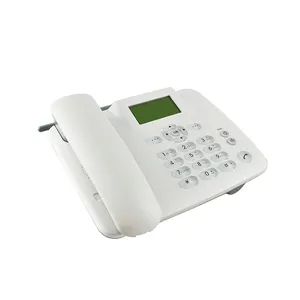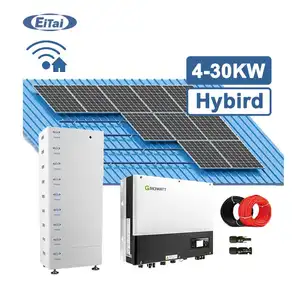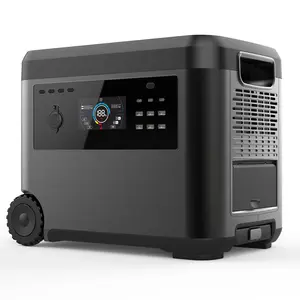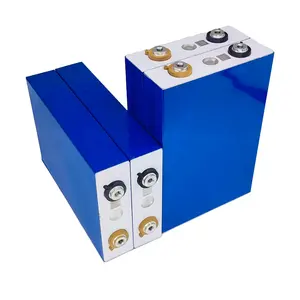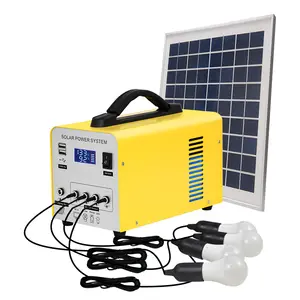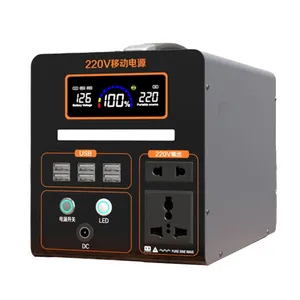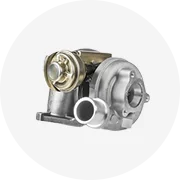Phổ biến trong ngành của bạn






3.2V 20Ah 15ah 22ah C40 C33 33140 40135 33138 40160 EV LFP di động LiFePO4 hình trụ pin năng lượng mặt trời Pin Lithium Ion pin
3,20 US$ - 4,00 US$
Đơn hàng tối thiểu: 10 Cái
Vận chuyển mỗi chiếc: 30,00 US$






Chất lượng cao 3.7V Lipo 502535 400mAh lithium polymer pin lithium polymer ion tế bào pin gói pin
0,63 US$ - 0,65 US$
Đơn hàng tối thiểu: 100 Cái







Ban Đầu Winston Pin WB-LYP100AHA LiFeYPO4 (3.2V/100Ah Cao) Di Động
104,00 US$ - 110,00 US$
Đơn hàng tối thiểu: 4 Cái







18650 pin 3.7V 2000mAh 33140 40135 32140 hình trụ có thể sạc lại năng lượng lưu trữ pin 18650 3.7V Pin Lithium Ion
2,50 US$ - 4,00 US$
Đơn hàng tối thiểu: 10 Cái
Vận chuyển mỗi chiếc: 30,00 US$







Pin Lifepo4 3.2V 100ah 200ah 280ah 300ah 320ah Hàng Mỹ Dùng Cho Hệ Thống Năng Lượng Mặt Trời
10,00 US$ - 125,50 US$
Đơn hàng tối thiểu: 4 Cái







906090 6064100 7449108 40110115 806090 phẳng có thể sạc lại Li-polymer pin Lithium Polymer Pin 3.7V 6000mAh cho máy tính bảng
1,50 US$ - 3,00 US$
Đơn hàng tối thiểu: 10 Cái
Vận chuyển mỗi chiếc: 6,84 US$






Pin Sạc 6000MAh Pin Lithium Polymer LP906096 3.7V Cho Thiết Bị Gia Dụng Thông Minh
5,20 US$ - 5,80 US$
Đơn hàng tối thiểu: 10 Cái





Tewaycell Chất lượng cao Lithium Polymer Battery Pack 3.7V 6000mAh có thể sạc lại LiPo pin 906090
3,80 US$ - 4,11 US$
Đơn hàng tối thiểu: 100 Cái






Pin Lipo Tùy Chỉnh Pin Sạc 3.7V 7.4V 400Mah 650Mah 2000Mah 6000Mah 8000Mah
0,30 US$
Đơn hàng tối thiểu: 1000 Cái






Pin Lithium Polymer Có Thể Sạc Lại Dung Lượng Cao 6000Mah 7.4V
Sẵn sàng vận chuyển
8,08 US$ - 9,00 US$
Đơn hàng tối thiểu: 1 Cái






6000mAh 7000mAh 8000mAh 9000mAh 10AH 9065112 9265112 Lipo Polymer Pin 3.7V 10000mAh pin lithium 10000mAh
1,85 US$ - 2,85 US$
Đơn hàng tối thiểu: 10 Cái
Vận chuyển mỗi chiếc: 203,77 US$






Tùy Chỉnh Siêu Mỏng 3.7 V 80 60 75 110 150 300 320 350 2700 3150 4000 6000Mah Mah Li Lithium Polymer Lipo Pin Cho Bán
0,60 US$ - 1,50 US$
Đơn hàng tối thiểu: 1 Cái
Các tìm kiếm liên quan:
pin lithium polymer 500mahpin polymer 200mahaaa 1600mah rechargeble pinpin lithium polymer 1900mahpin lithium polymer 160mahpin lithium polymer 600mahpin lithium polymer 75mahpin lithium polymer 320mahpin lithium polymer 260mahpin lithium polymer 120mahpin lithium polymer 35mahpin lithium polymer 200mahpin lithium polymer 270mahpin lithium polymer 1700mahpin lithium polymer 2500mah





Pin Sạc Polymer 9026200 3.7V, Pin Lithium Polymer Có Dải 6000Mah
3,75 US$ - 3,90 US$
Đơn hàng tối thiểu: 5000 Cái









Pin Lipo 906090 6000MAh 3.7V Pin Lithium Ion Polymer 6ah Cho Ngân Hàng Điện
3,00 US$ - 3,50 US$
Đơn hàng tối thiểu: 100 Cái






Tùy chỉnh ul KC UN38.3 Li-Po Pin 3s1p 3s2p 7.4V 11.1V 1000mAh 6000mAh 10000mAh 3.7V Lithium ion polymer
0,85 US$ - 1,80 US$
Đơn hàng tối thiểu: 5 Cái
Vận chuyển mỗi chiếc: 64,20 US$






Pin Li-Po Pin Lithium Polymer 3.7V 4000MAh 5000MAh 6000MAh 7000MAh 8000MAh Cho Máy Tính Bảng E-Book Powerbank Máy Tính Xách Tay
0,60 US$ - 1,50 US$
Đơn hàng tối thiểu: 10 Cái






Pin Lipo 80C Tốc Độ Cao 9248145 3.7V 6000Mah Pin Lithium Polymer Cho Đồ Chơi Máy Bay Không Người Lái RC
9,50 US$ - 11,00 US$
Đơn hàng tối thiểu: 5 Cái






OEM tùy chỉnh ngân hàng điện ngoài trời có thể sạc lại Polymer sư tử Pin 105075 ul2464 6000mAh 5000mAh 5500mAh 3.7V Ion pin lithium
1,00 US$ - 1,80 US$
Đơn hàng tối thiểu: 5 Cái
Vận chuyển mỗi chiếc: 9,20 US$






Pin Lithium Polymer Siêu Mỏng Lipo 3.7V 6000Mah Pin Lithium Ion 3.7V 3000Mah
3,20 US$ - 3,80 US$
Đơn hàng tối thiểu: 5 Cái






Hàng hóa tại chỗ Router sao lưu cung cấp điện 12V 6000mAh pin lithium polymer cho quy mô điện tử
13,60 US$
Đơn hàng tối thiểu: 50 Cái






Pin Lithium Ion Polymer 8051116 Pin Lithium Polymer 3.7 Mah 6000 V 6900Mah Được Phê Duyệt UL IEC62133 Với PCM
5,65 US$ - 5,96 US$
Đơn hàng tối thiểu: 5 Cái






Giá Rẻ Giá RC LiPo pin 2200mAh 5200mAh 6000mAh 3S/4S/6S 11.1V lithium polymer rc Quadcopter bay không người lái Pin
9,50 US$ - 19,50 US$
Đơn hàng tối thiểu: 2 Đơn vị
Vận chuyển mỗi chiếc: 5,19 US$






Pin LiPo Công Suất Cao 3.7V 884765 6000Mah Pin Lithium Polymer Cho Máy Bay Không Người Lái
5,00 US$ - 10,00 US$
Đơn hàng tối thiểu: 1 Cái






Trung quốc pin 6000 mah 3 S 11.1 V pin lithium polymer cho rc máy bay trực thăng đồ chơi
21,95 US$ - 22,25 US$
Đơn hàng tối thiểu: 50 Cái

Pin Lithium Polymer 3.7V 6000Mah Nhỏ Cho Ngân Hàng Điện Tử
2,90 US$ - 3,30 US$
Đơn hàng tối thiểu: 10 Cái






Enerforce 6000mAh LiPo RC Pin 22.2V 6S Lipo Pin tỷ lệ cao pin lithium polymer cho UAV bay không người lái
32,80 US$ - 34,80 US$
Đơn hàng tối thiểu: 10 Cái
Vận chuyển mỗi chiếc: 5,42 US$






FPV bay không người lái Pin 6000mAh 6S 25C 22.2V Lithium Polymer 4S 5S 6S UAV Pin cho RC bay không người lái máy bay đồ chơi
13,50 US$ - 40,00 US$
Đơn hàng tối thiểu: 2 Cái
Vận chuyển mỗi chiếc: 222,36 US$






AUK Flat Lithium Polymer Pin 3.7V 6000Mah Sạc Lipo Pin Cho Tablet 806085 955779 Sạc Li Ion Pin
4,48 US$ - 5,25 US$
Đơn hàng tối thiểu: 100 Cái






12V Li Ion Pin 3S1P GEB 456091 11.1V 6000MAh Tế Bào Pin Lithium Polymer Cho Ngân Hàng Điện Tử
10,00 US$ - 11,00 US$
Đơn hàng tối thiểu: 10 Cái






Nhà Máy Pin Tùy Chỉnh 3.7V 7.4V 6V Lipo 400Mah 650Mah 2000Mah 6000Mah 8000Mah Pin Lithium Có Thể Sạc Lại Nhà Máy
0,12 US$ - 1,12 US$
Đơn hàng tối thiểu: 1 Cái






Pin Lithium Polymer Mỏng 7060100 3.7V 6000Mah Dung Lượng Cao
Sẵn sàng vận chuyển
6,00 US$ - 8,00 US$
Đơn hàng tối thiểu: 3 Cái
Vận chuyển mỗi chiếc: 18,67 US$












Pin Lithium Polymer 3.7V 22,2wh 6000MAh Cho Điện Thoại Android
Sẵn sàng vận chuyển
6,35 US$ - 7,00 US$
Đơn hàng tối thiểu: 1 Cái
Vận chuyển mỗi chiếc: 13,00 US$






Bán Chạy Nhất Lithium Polymer Có Thể Sạc Lại 5500Mah 6000Mah 3.7V 7060100 Pin Cho Ngân Hàng Điện Và Tablet PC
2,80 US$ - 3,30 US$
Đơn hàng tối thiểu: 10 Cái




Pin Sạc Lithium Polymer JP38102110 3.7V 6000Mah Cho Pin Máy Tính Bảng Laptop
4,98 US$ - 9,50 US$
Đơn hàng tối thiểu: 10 Cái






Siêu Mỏng 30100160 3.7V Công Suất Cao 6000Mah Pin Lithium Polymer Cho Máy Tính Bảng
2,35 US$ - 2,85 US$
Đơn hàng tối thiểu: 100 Cái






120C rechargeable long life battery lithium polymer 14.8V 18.5V 22.2V 6000mAh 22000mah batteries for UAV fpv drone battery
19,99 US$ - 29,99 US$
Đơn hàng tối thiểu: 10 Cái
Vận chuyển mỗi chiếc: 4,75 US$


Pin Lithium Polymer 3.7Wh 6000MAH Tùy Chỉnh Pin Li-ion Dung Lượng Cao Pin Lithium Ion Polymer
4,90 US$ - 5,50 US$
Đơn hàng tối thiểu: 50 Cái






Tùy chỉnh bán buôn Lipo 7.4V 6000mAh RC máy bay trực thăng pin lithium polymer
13,98 US$ - 15,98 US$
Đơn hàng tối thiểu: 100 Bộ
Vận chuyển mỗi chiếc: 50,95 US$
Các danh mục hàng đầu
Giới thiệu về pin lithium polymer 6000mah
Công nghệ đang thay đổi cách mọi người sống hàng ngày. Như vậy, đáng tin cậy. pin lithium polymer 6000mah trên Alibaba.com mang lại độ bền tốt hơn cho bất kỳ thiết bị nào cần sản lượng điện tốt hơn. Các mẫu khác nhau có các thông số kỹ thuật khác nhau để phù hợp với khuyến nghị của nhà cung cấp. Bền chặt. pin lithium polymer 6000mah phải nhanh chóng được tìm thấy và có thể dễ dàng thay thế. Với nhiều loại vật liệu sản xuất, bạn có thể lựa chọn tốt hơn khi mua để sử dụng.
Do tiến bộ công nghệ, nhiều thiết bị cần được cung cấp điện liên tục. Đáng tin cậy. pin lithium polymer 6000mah sẽ tồn tại lâu hơn các thiết bị chủ để có dịch vụ tốt hơn. Tương tự, các sản phẩm hỗ trợ này tương thích với các thành phần liti và axit chì. Do đó, khả năng tương thích giữa các thiết bị và các tiện ích hỗ trợ là rất phù hợp.
Cho dù đó là thiết bị gia đình văn phòng phẩm hay pin sạc dự phòng di động, có thể sạc lại. Các phần pin lithium polymer 6000mah trên Alibaba.com giúp đảm bảo rằng chúng cung cấp cho người dùng dịch vụ tối ưu. Các sản phẩm này có thể chịu được nhiệt độ cao và ăn mòn. Tuổi thọ dài mang lại dịch vụ tốt hơn trước khi chúng cần được thay thế. Một lần nữa, các cơ sở lưu trữ phải còn nguyên vẹn để giảm va đập mạnh và hư hỏng. Chúng cũng đi kèm với cáp kết nối để có dịch vụ tốt hơn.
Đối với nhu cầu điện quy mô lớn như xe ba bánh và nhạc cụ, kỹ thuật số. pin lithium polymer 6000mah cung cấp một bước đệm tài chính. Alibaba.com cung cấp một nền tảng để đảm bảo độ tin cậy khi mua hàng. Nhiều người bán trên toàn cầu phân phối sản phẩm trong khung thời gian hợp lý để tạo sự thoải mái cho khách hàng. Cuộn qua các danh mục để biết các thiết bị tương thích nhất và các giao dịch tài chính.
Do tiến bộ công nghệ, nhiều thiết bị cần được cung cấp điện liên tục. Đáng tin cậy. pin lithium polymer 6000mah sẽ tồn tại lâu hơn các thiết bị chủ để có dịch vụ tốt hơn. Tương tự, các sản phẩm hỗ trợ này tương thích với các thành phần liti và axit chì. Do đó, khả năng tương thích giữa các thiết bị và các tiện ích hỗ trợ là rất phù hợp.
Cho dù đó là thiết bị gia đình văn phòng phẩm hay pin sạc dự phòng di động, có thể sạc lại. Các phần pin lithium polymer 6000mah trên Alibaba.com giúp đảm bảo rằng chúng cung cấp cho người dùng dịch vụ tối ưu. Các sản phẩm này có thể chịu được nhiệt độ cao và ăn mòn. Tuổi thọ dài mang lại dịch vụ tốt hơn trước khi chúng cần được thay thế. Một lần nữa, các cơ sở lưu trữ phải còn nguyên vẹn để giảm va đập mạnh và hư hỏng. Chúng cũng đi kèm với cáp kết nối để có dịch vụ tốt hơn.
Đối với nhu cầu điện quy mô lớn như xe ba bánh và nhạc cụ, kỹ thuật số. pin lithium polymer 6000mah cung cấp một bước đệm tài chính. Alibaba.com cung cấp một nền tảng để đảm bảo độ tin cậy khi mua hàng. Nhiều người bán trên toàn cầu phân phối sản phẩm trong khung thời gian hợp lý để tạo sự thoải mái cho khách hàng. Cuộn qua các danh mục để biết các thiết bị tương thích nhất và các giao dịch tài chính.
